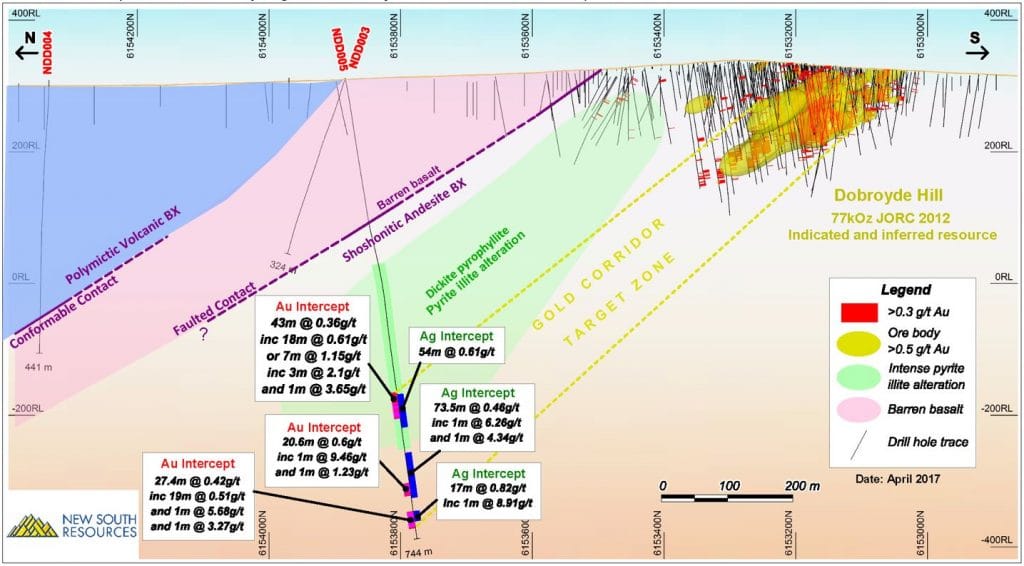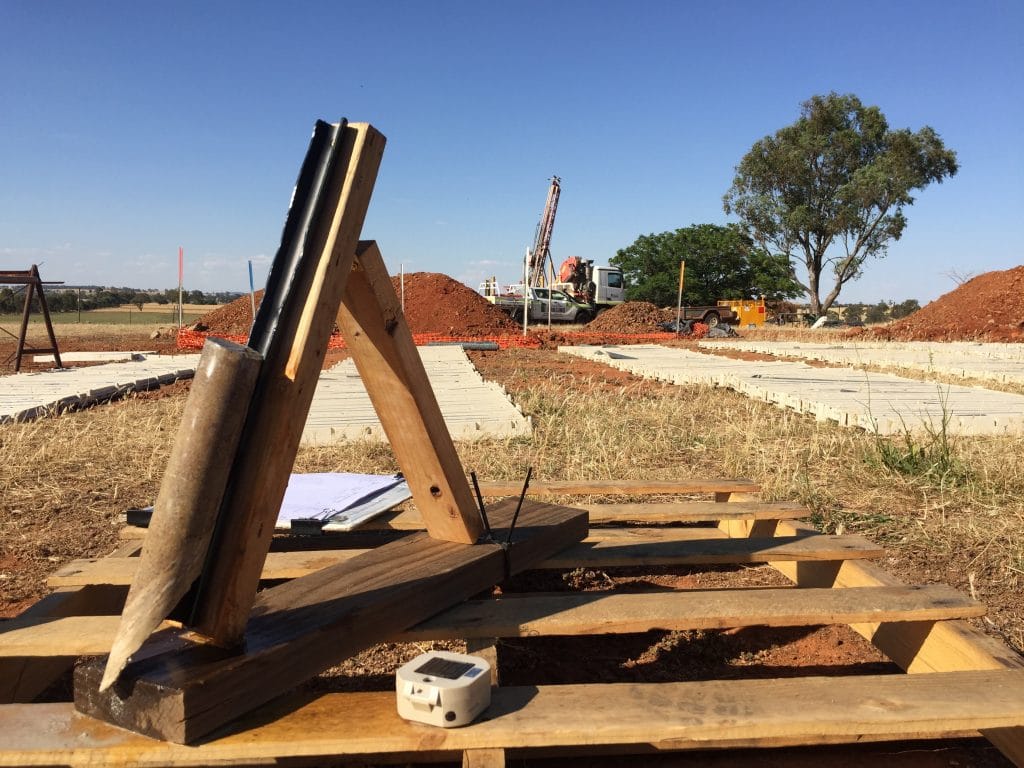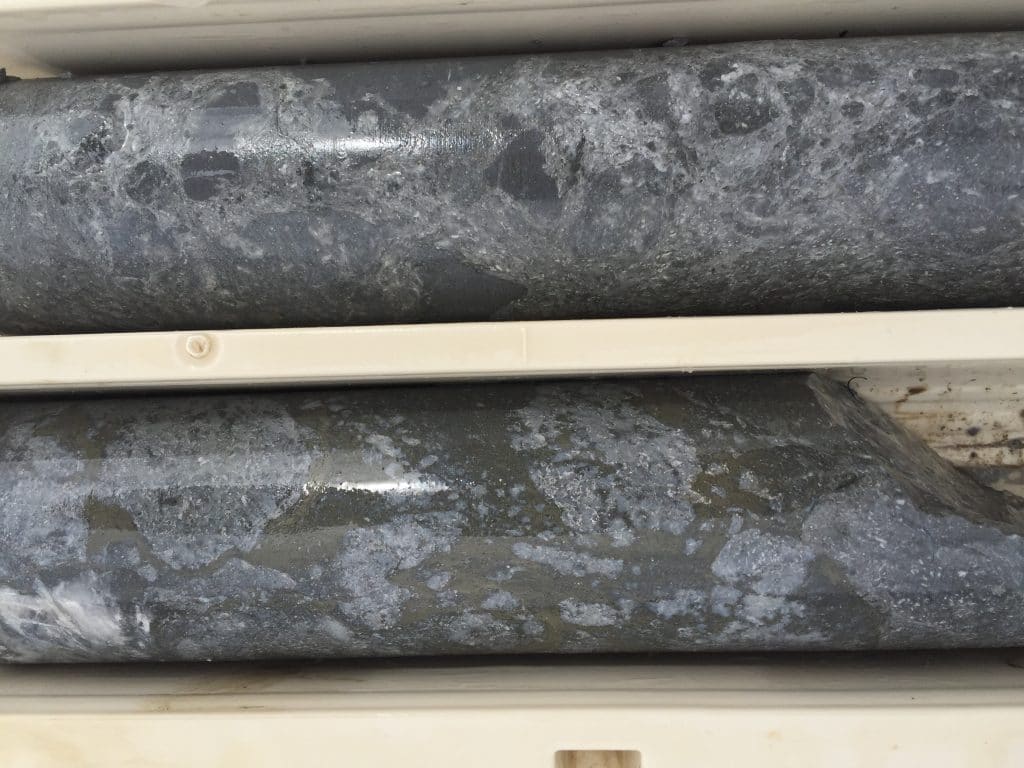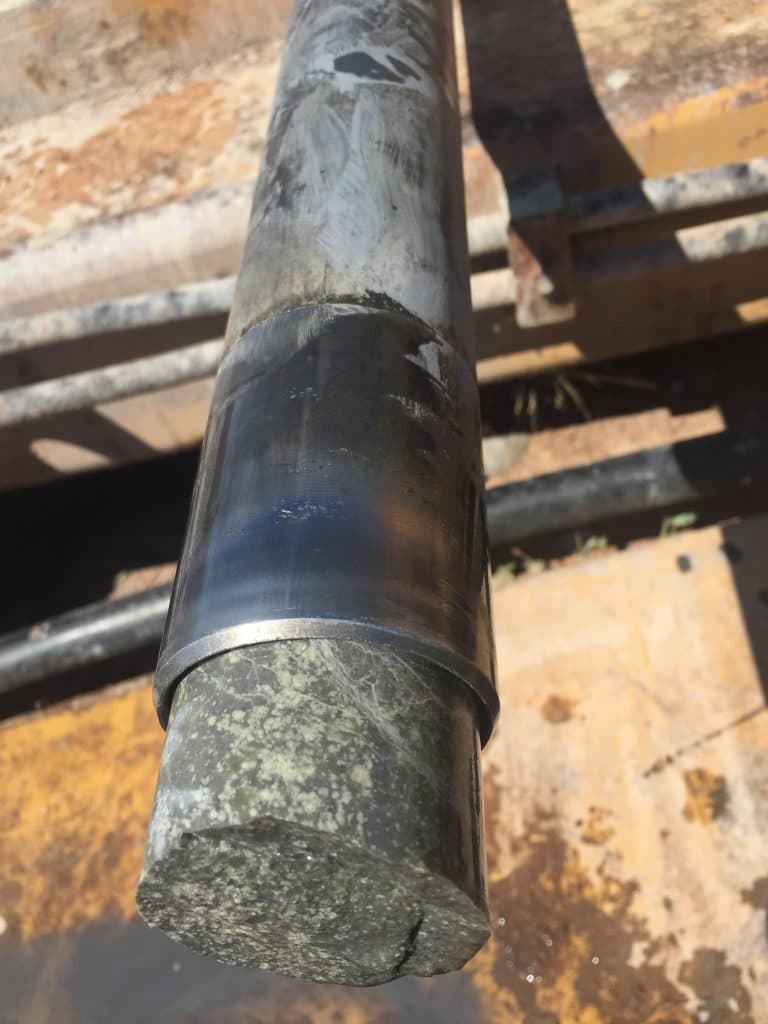
Getty Oil discovered the Dobroyde system in 1983 shortly after epithermal style gold was discovered at Gidginbung by BP Minerals 60 km to the north. NSR acquired the licence in 2006. Since then NSR have completed ground magnetics survey, 3DIP, drilling & preliminary metallurgy. A JV between 2013 to 2016 completed critical work including petrology, structural and geophysical reinterpretations and 3D inversion modelling. Coupled with on the ground mapping and a structural interpretation, this work generated new porphyry and deeper epithermal targets which NSR recently drilled successfully part funded by the NSW governments Cooperative Drill Funding. The drilling intersected a thick package of highly altered volcanic rocks with similarities to the giant Cowal Gold Mine, 120km North.
NSR retains 100% of the Dobroyde tenements and is excited about the future.
Significant intersections in NDD005 between 507m-727.4m include:
The Dobroyde prospect lies 50km north of Wagga Wagga and 10km north of Junee. The purpose of the drilling was to test three conceptual geology/geophysics targets between 700m to 1500m north of the current gold resource, as shown in figure 1. Three diamond holes totalling 1,509m were drilled over 2 months to mid-January 2017. Selected samples from NDD005 and NDD004 were assayed at ALS Laboratories in Orange, NSW.
Two styles of gold mineralisation have now been discovered at Dobroyde. The style of mineralisation and alteration intercepted in this round of drilling is characterised as carbonate base-metal gold epithermal and shows similarities to the 8M Oz Cowal E42 gold mine owned by Evolution Mining. This style is different to the Dobroyde Hill mineralisation which is described as high-sulphidation epithermal. The company is very pleased with the two styles of mineralisation as it demonstrates when the Dobroyde Volcanic Complex was forming it was long lived, multifaceted and the chemistry of the gold-rich fluids evolved over time and hence has the potential to host one or more major deposits.
The mineralisation intersected in NDD005 potentially extends the gold corridor by 700m, taking the total strike length to 900m in length down plunge.
The newly intersected geology, alteration and mineralisation is interpreted to be the outer shell of a larger zone of mineralisation. Clay alteration mineralogy suggests the hotter core of the deposit may be very close, within a few hundred metres away.
Over the last few months the data from the 24km of historic drill holes at Dobroyde has been digitised into NSR’s database. This work together with the new drilling is helping to increase NSR’s understanding of the architecture and geology of the Dobroyde Volcanic Complex and we are more confident now that the prospect has potential for a major economic discovery.
Due to the quality of these results, a new ca190km2 licence EL8577 surrounding Dobroyde was applied for and has been preliminarily granted by the NSW government. This new licence will give the Dobroyde Project enough ground holding to accommodate future development if it were to occur.


